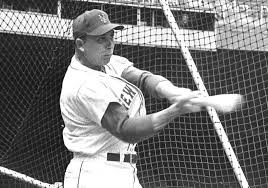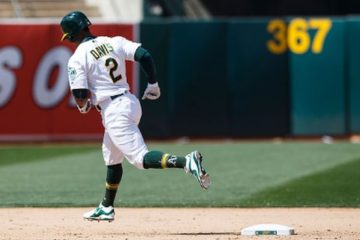2013 Fantasy Baseball, The Fielding Edge: Los Angeles Dodgers vs. Arizona Diamondbacks

Author’s Note: This is the fifth edition of a seven part series on fielding, and how it could affect your fantasy team and the trade deadline. We are profiling the top two teams in each division because those are the teams most likely to deal for players to help them down the stretch. During the process, we will discuss some fairly complex topics as it pertains to fielding. If you did not catch the first edition of this series, you can scroll to the bottom for a glossary of terms.
The battle for the NL West is a tough battle every year. With some divisions it is difficult to pick two front runners, but the Dodgers stormed to the top of the standings this week after spending most of the season in an injury-induced malaise. The Diamondbacks had an opportunity to run away and hide, but struggled to keep the Rockies and Giants in their rearview mirror.
The Dodgers are spending more than 200 million dollars for their whole roster and they recently added Ricky Nolasco to the mix. In spite of all of the big names, the standings show they are barely above average as a team. Yet, notice the difference in defensive innings below and when we profile the Diamondbacks later on in the piece. It would appear that Don Mattingly has a built in excuse and that excuse ultimately saved him his job.
Los Angeles Dodgers
|
INN |
+/- |
Runs |
||
| C | A.J. Ellis |
583 |
—- |
+3 |
| 1B | Adrian Gonzalez |
806 |
+11 |
+8 |
| 2B | Mark Ellis |
537 |
+5 |
+5 |
| 3B | Juan Uribe |
473 |
+5 |
+1 |
| SS | Hanley Ramirez |
304 |
+3 |
0 |
| LF | Carl Crawford |
431 |
0 |
-3 |
| CF | Andre Ethier |
781 |
0 |
+3 |
| RF | Yasiel Puig |
353 |
+12 |
+6 |
| Total |
4268 |
+36 |
+23 |
I would be very afraid to face the Dodgers in a seven game series. They have three top-notch pitchers in Kershaw, Greinke, and Ryu and they have a lineup that is just getting healthy. The above list does not include Matt Kemp because he has been on the shelf for most of the season. Obviously, his defensive reputation is not stellar, but he should come close to approximating what an Andre Ethier has done out of position.
Their .686 team DER could be a reflection of inefficiency or it could be a simple byproduct of the fact that they have far fewer innings from their regulars than any other playoff contender. Even the platooning Athletics have nearly 700 more innings collectively. Given these factors, I would expect them to improve in all areas as we move forward. By the end of the season, they should be a league average fielding team. That would be enough with their offensive potential and pedigreed pitching staff to make it all the way.
On the other hand, the Diamondbacks have been a little more stable defensively if only because they entered the season with more depth. Gerardo Parra was supposed to be a fourth outfielder and might still be considered one when you breakdown his innings amongst the three outfield positions. Yet, with Jason Kubel’s injury, you can consider him a regular. Adding Kubel was probably a mistake anyway, so not having him enables them to perform better.
The combined numbers for the Diamondbacks is astounding. Like with the Dodgers, their .698 overall DER belies what we see below. It could be strategy, but it could also be the fact that they have had quite a few players with some time at different positions. However, if we look at the numbers below, you will notice a distinct pattern in how the numbers are distributed.
Arizona Diamondbacks
|
INN |
+/- |
Runs |
||
| C | Miguel Montero |
778 |
—- |
+1 |
| 1B | Paul Goldschmidt |
881 |
+16 |
+12 |
| 2B | Aaron Hill |
289 |
-7 |
-7 |
| 3B | Martin Prado |
846 |
+4 |
+5 |
| SS | Didi Gregorius |
593 |
+6 |
0 |
| LF | Gerardo Parra |
842 |
+24 |
+22 |
| CF | A.J. Pollock |
624 |
+23 |
+12 |
| RF | Cody Ross |
624 |
+25 |
+15 |
| Total |
5477 |
+91 |
+60 |
When looking at the numbers above we see what is most likely going on. The Diamondbacks are the king of fielding overall, but their numbers are deceiving. Their outfield defense is out of this world as compared to the infield defense. The infield defense can be categorized as above average and that just happens to match where their overall DER would rank. This is what we would categorize as a misappropriation of resources.
Kevin Towers has been adding outfielders like they are going out of style and generally speaking the quality has been good. Yet, their staff appears to be more of a groundball oriented staff. That means they cannot take advantage of their tremendous outfield. Aaron Hill is normally better than what he is showing, but he’s been hurt most of the season. I would expect those numbers to rebound. When they do, their overall fielding will likely go from above average to very good.
All of this brings us to the most important question in your mind: how will all of this effect my fantasy team. Matt Kemp went on the disabled list yet again, so we aren’t likely to see any deals from either squad going down the stretch. The Dodgers will go on in the belief that reasonable health (minus Matt Kemp) will keep them on the right track. The Diamondbacks have enough internal depth to weather the storm.
Glossary of Terms
DER- DER stands for Defense Efficiency Rating. It can be found at both baseball-reference.com and at baseballprospectus.com. We are using the Baseball Reference version above. Essentially, it calculates the percentage of batted balls that are put into play that a defense converts into outs. So, if the league average is .693, it means that the league average defense converts 69.3% of all batted balls in play into outs.
+/-– John Dewan’s Fielding Bible system uses video technology to track every batted ball in play. Through extensive study, they have determined the average number of plays each fielder should make based on the balls that are hit into his fielding zone. The researchers calculate an average based on the number and relative difficulty of those plays. If he makes more plays than expected he has a positive rating. If he makes fewer plays then he has a negative rating.
Runs—The researchers place a run value on the plays based on the expected number of runs that a successful play would have saved or an unsuccessful play would have not saved. Usually, a player with a positive +/- will also have a positive run value, but that isn’t always the case since some plays will carry more run value than others.





